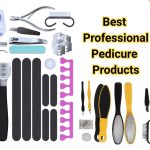As an Amazon Associate I earn from qualifying purchases.
Are you tired of the discomfort and pain caused by an ingrown toenail? You’re not alone.
Many people suffer from this pesky problem and often wonder if their local nail salon can provide relief. Before you book that appointment, it’s crucial to understand what services nail salons can and cannot offer for ingrown toenails. We’ll uncover the truth about whether nail salons can effectively remove ingrown toenails and explore the best options for you to find relief.
Discover how you can take control of your foot health and make informed choices to keep your feet happy and healthy. Don’t miss out on this essential information that could change how you care for your feet forever.

Credit: www.drnickcampi.com
Ingrown Toenails Explained
Ingrown toenails can be painful and frustrating. They occur when the edge of a toenail grows into the surrounding skin. This condition often leads to discomfort and inflammation. Understanding its causes and symptoms can help in preventing it.
Common Causes
Improper nail trimming is a major cause. Cutting nails too short can lead to ingrown toenails. Wearing tight shoes puts pressure on toes. This can force nails into the skin. Injury to the toenail can also lead to this condition. Some people have a genetic tendency towards curved toenails.
Symptoms To Watch For
Redness and swelling around the nail are early signs. Pain when pressing the toe is common. Ingrown toenails can also cause infection. Pus or fluid may drain from the area. The skin around the nail may feel warm.

Credit: www.drnickcampi.com
Role Of Nail Salons
Nail salons play a vital role in foot care. They offer various services to keep your feet healthy and beautiful. Many people visit nail salons for routine pedicures. These treatments can address minor foot issues. But, can they help with ingrown toenails? Understanding their role is important.
Services Offered
Nail salons provide pedicures that improve foot health. During a pedicure, technicians clean and shape nails. They also remove dead skin and calluses. Some salons offer treatments to soften the skin. This can help prevent ingrown toenails. Technicians may trim nails properly to reduce risks. Regular visits can help maintain foot hygiene.
Limitations And Risks
Nail salons have limitations in dealing with ingrown toenails. Technicians are not medical experts. They can manage minor cases but not serious ones. Deeply embedded nails may require medical attention. Attempting removal in a salon can lead to infection. It’s risky without proper tools and expertise. Always consult a podiatrist for severe cases. They offer safe and effective treatments.
When To Seek Professional Help
Nail salons typically focus on cosmetic nail care rather than medical treatment. For ingrown toenails, it’s best to consult a podiatrist. They specialize in treating foot conditions and can safely remove ingrown nails.
When dealing with an ingrown toenail, it’s crucial to know when to seek professional help. While nail salons offer a range of services, they’re not always equipped to handle this particular issue. Sometimes, what starts as a minor discomfort can escalate into a more severe problem that requires medical intervention. Knowing the difference between when a salon visit will suffice and when you need a podiatrist is essential for maintaining healthy feet.
Podiatrist Vs. Salon
A podiatrist is a medical professional who specializes in foot care. They have the training to safely and effectively treat ingrown toenails, especially if there’s an infection or severe pain. Nail salons may offer basic pedicure services that can help with minor nail maintenance, but they’re not equipped to handle medical issues. When your toenail is causing significant discomfort or if you notice swelling and redness, it’s time to consult a podiatrist. Nail salons are great for regular beauty treatments and pampering. You can enjoy a relaxing pedicure and leave with beautifully polished nails. However, if your toenail is causing you pain, relying on a salon could lead to more problems. Your nail technician is skilled in aesthetics, but they may not have the medical knowledge needed for your situation.
Warning Signs
Keep an eye out for warning signs that suggest professional help is needed. If your toenail becomes red, swollen, or if pus is present, these are signs of infection. Don’t ignore these symptoms; they indicate that a podiatrist should be your next stop. Severe pain and difficulty walking due to your toenail are red flags. If home remedies don’t improve your situation within a few days, it’s wise to get a professional opinion. Podiatrists can offer solutions that prevent the problem from worsening, ensuring you can return to your daily activities without discomfort. It’s tempting to try and fix the problem yourself, but consider the risks. Are you prepared to handle potential complications? Consulting a professional might save you from further pain and expense in the long run. In your experience, have you ever chosen a salon over a podiatrist for foot care? Reflect on the outcomes and whether they met your needs. Understanding when to seek professional help can make all the difference in your foot health.

Credit: www.youtube.com
Diy Care Tips
Nail salons often focus on aesthetic services like manicures and pedicures. Removing ingrown toenails is typically done by healthcare professionals. DIY care tips for ingrown toenails include soaking feet in warm water and using cotton to lift the nail gently.
Ingrown toenails can be a pesky problem. They often bring discomfort and sometimes even pain. While nail salons provide professional treatments, you might be wondering how you can take care of them at home. DIY care is not only cost-effective but also convenient. With a bit of patience and the right approach, you can manage ingrown toenails effectively without stepping into a salon.
At-home Remedies
Start by soaking your feet in warm, soapy water. This softens the nail and skin, making it easier to treat. A 15-minute soak can do wonders. After soaking, gently lift the edge of the ingrown nail using a clean dental floss or a cotton ball. Be careful not to force it, as this can cause more pain and damage. Applying a topical antibiotic cream can prevent infection. You might also use tea tree oil, known for its antibacterial properties. Always cover the area with a bandage to keep it clean and protected.
Prevention Strategies
Prevention is key to avoiding future ingrown toenails. Trim your nails straight across, avoiding rounded edges. This simple step can make a big difference. Choose shoes that fit well and offer enough room for your toes. Tight shoes are often the culprits behind ingrown toenails. Consider the activities you engage in. Are you putting excessive pressure on your toes? For instance, running or dancing can sometimes lead to toenail issues. Reflecting on your habits might help you pinpoint potential causes. How do you care for your feet daily? Regular foot care, including moisturizing, can keep the skin supple and healthy. This reduces the risk of nails growing into the skin. Engage with your feet. Notice any changes or discomfort early. This awareness is your first line of defense against ingrown toenails. Are you ready to take a proactive approach to foot care?
Expert Insights
Navigating the world of nail care can sometimes lead you to unexpected questions, like whether nail salons are equipped to remove ingrown toenails. This inquiry often arises due to the discomfort and inconvenience caused by this common issue. Understanding whether your local nail salon can handle this task is essential. Let’s dive into expert insights on this matter, focusing on professional opinions and safe practices.
Professional Opinions
Many nail technicians and salon professionals agree that while nail salons offer a wide range of services, removing ingrown toenails is a task best suited for a medical professional. A podiatrist, for example, has the training to address this condition safely and effectively.
However, some salons may offer basic relief for mild cases. If you’ve experienced this at a salon, you might recall them trimming or filing the nail to reduce pressure. It’s crucial to know when a professional touch is necessary, ensuring no further complications arise.
Safe Practices
Safety should always be your priority when dealing with ingrown toenails. If you’re considering salon intervention, inquire about their procedures and expertise. A well-informed decision can protect you from infection or worsening of the condition.
Salons offering help might utilize soaking techniques to soften nails, making them easier to manage. You should ask if they follow strict hygiene protocols. Does the salon sterilize their equipment properly? This question can be a deciding factor in choosing the right place.
Ultimately, for severe cases, consulting a healthcare professional is the safest route. Have you ever wondered about the long-term effects of ignoring an ingrown toenail? Addressing it correctly from the start can save you from future hassles.
What steps have you taken in the past for nail care, and how have they worked for you? Sharing experiences can lead to better collective understanding and practices.
Choosing The Right Salon
Finding the right nail salon for ingrown toenail removal is crucial. Not all salons offer this specialized service. Some might not have trained professionals. Safety and hygiene are paramount. Choosing wisely can prevent infections and complications.
Start by researching local salons. Read online reviews. Ask friends for recommendations. Look for a salon with good feedback on hygiene and service quality.
Questions To Ask
Before booking, ask important questions. Do they offer ingrown toenail removal? Is the staff trained for this procedure? What tools do they use? Are the tools sterilized? These questions ensure you choose a safe and competent salon.
Certifications And Hygiene
Check if the salon has proper certifications. Certified salons follow safety and hygiene standards. This reduces the risk of infections.
Observe their hygiene practices. Do they use disposable tools? Are workstations clean? Proper hygiene practices protect your health.
Frequently Asked Questions
Do Nail Salons Treat Ingrown Toenails?
Most nail salons offer basic pedicure services. For ingrown toenails, it’s best to see a podiatrist. They are trained to handle complex foot issues safely. Nail technicians can provide advice but may not be equipped for serious conditions.
Can Pedicures Help With Ingrown Toenails?
Pedicures can maintain nail health and prevent ingrown toenails. They involve cleaning and trimming nails properly. Regular pedicures help in keeping nails neat. However, they might not resolve severe ingrown toenails. Consult a podiatrist for persistent issues.
Is It Safe To Remove Ingrown Toenails At Home?
Removing ingrown toenails at home can be risky. Incorrect removal may worsen the condition or cause infection. It’s best to consult a professional. A podiatrist can safely remove ingrown toenails. They have the tools and expertise needed.
How Do Nail Salons Prevent Ingrown Toenails?
Nail salons prevent ingrown toenails by trimming nails correctly. They avoid cutting nails too short or rounded. Educating clients on proper nail care also helps. Regular salon visits can maintain nail health. They focus on safe and hygienic practices.
Conclusion
Nail salons can help with minor ingrown toenails. They offer basic care. For severe cases, seeing a podiatrist is best. Always ensure the salon follows hygiene standards. This keeps your feet healthy. Regular pedicures can prevent ingrown toenails. Communication with your nail technician helps avoid discomfort.
They should know your concerns. Your foot health is important. Choose the right place for your needs. Safe and clean environments matter. Prioritize your comfort and safety. Make informed decisions for foot care. Your feet deserve the best attention.
Amazon and the Amazon logo are trademarks of Amazon.com, Inc, or its affiliates.







